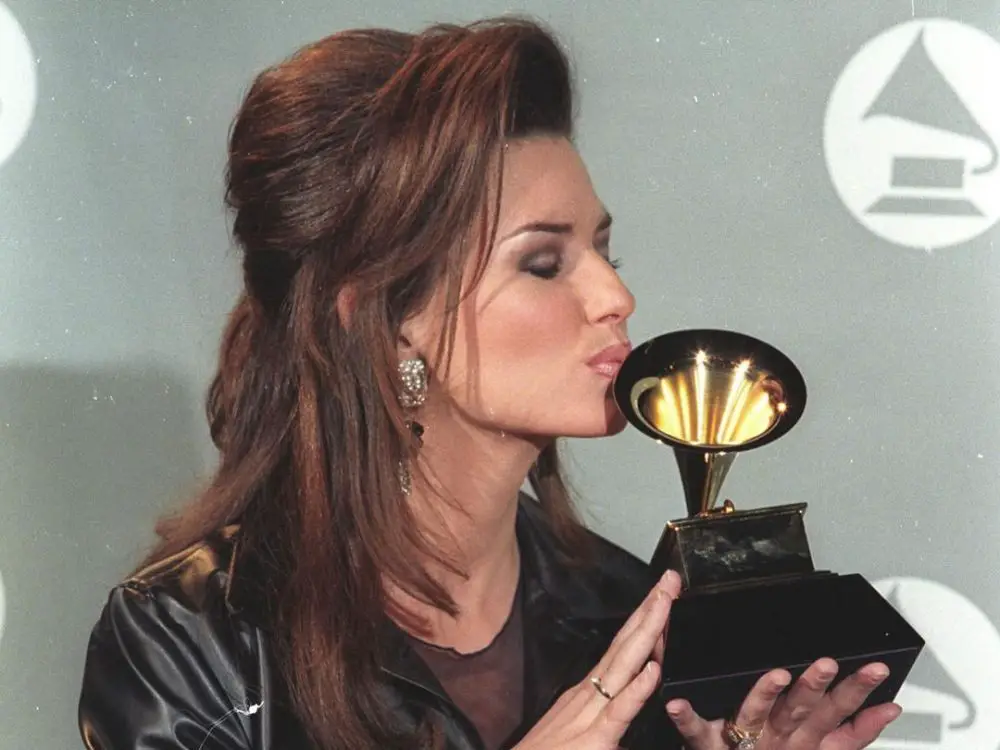Let’s travel back to the ‘90s. The Backstreet Boys, Britney Spears and Destiny’s Child took over the world, performing constantly and receiving adoration from millions. But another artist dominated the ‘90s who showcased feminism way before her time and was known mostly in the country and pop communities: Shania Twain.
Twain was a household favorite throughout the decade, touring all over the country and releasing album after album. One of her releases, “Come on Over,” became the bestselling album by a female artist. The album featured tracks where she sang about PMS, a subject rarely talked about, let alone sung about (because what’s the world coming to if we start talking about periods).
Her album “Up!” saw the story of “Juanita,” a woman inside all women, ready to come out and speak for what’s right. “That Don’t Impress Me Much” shared the importance of emotional connection over looks, physical possessions or prestigious job titles when it comes to relationships. “She’s Not Just a Pretty Face” was the ultimate girl power anthem, preaching that women can be smart, funny, passionate, career-oriented and so much more.
“What a Way To Wanna Be!” combatted society’s pressure on women to look a certain way and displayed the ridiculousness of beauty standards, instead encouraging women to be their own person. All of these songs (and many more) showed what it meant to build up women instead of breaking them down.
In a culture where all it takes is the click of a button to criticize women (especially now with social media), Twain’s lyrics are powerful in their frank display of a woman’s worth. While this might not seem like a big deal now, as many contemporary songs emphasize all of these ideals, most of Twain’s music was made in the ‘90s to early 2000s.
This was a time consumed by (catchy) music that degraded women, treating them as sexual objects (although not all songs did this). Not only did Twain break the mold by combining two musical genres in a unique and powerful way, but she also broke through the idea that powerful, female-centered artists couldn’t become successful. This glass ceiling shattered around her year after year as she rose higher on the musical charts, inspiring little girls around the world (including me) to pursue what they wanted in life.
Her music didn’t shy away from the idea that women can be both strong and gentle, career-oriented and maternal, independent and romantic. It was multifaceted and three-dimensional, never shallow or meaningless. Watching Twain perform was like watching a force of nature blow through the arena. She didn’t act nonchalant and passive, but intentional and passionate about every move, lyric and interaction.
She showed me and countless other women that it’s okay to be fiery and talented and to own that power instead of downplaying it like many of us are conditioned to do. Her reign came to a temporary halt in 2004, when Twain lost her voice and took an unplanned, yearslong hiatus. For the first seven years, fans heard nothing while Twain worked through struggles no one knew about until she presented her journey in her 2011 TV special, “Why Not? with Shania Twain.”
In the series, Twain shared her road to success and her process of getting back on stage. From skydiving to singing in a studio again, fans had the opportunity to watch Twain take her career back, a powerful moment by any standard. Now, 16 years later, Shania Twain is back and better than ever.
With a residency in Las Vegas, singing hundreds of shows a year, Twain is the ultimate example of what a comeback looks like. Battling a hard childhood, an even harder marriage and the loss of her voice, Twain, the epitome of a strong woman in the media, traveled to hell and back. She didn’t let setback after setback kill her desire to sing again but worked through it in a way that many people don’t know how to.
She demonstrated this is in her song “Today Is Your Day.” The song speaks of the importance of setting your mind to a goal and remaining persistent and recognizing that belief is everything.
If this all wasn’t enough, Twain made her second debut at an age that few would dare to. In a culture that only likes to see young, childbearing-age female artists on the stage, Twain was downright ballsy to make her comeback in her 50s. Many female artists and actresses are shut out of the spotlight once they hit a certain age; while men get better and more distinguished as they get older, women get the short end of this sexist relationship. But, as the theme goes, this didn’t stop her.
Twain has now spent years in her Las Vegas residency, still wearing shimmery clothes and even adding a white horse to her show’s routine, showing that age is just a number. Therefore, not only has Shania Twain shown us (now grown-up) little girls what a powerful woman looks like but also what strong, powerful women can do.

















